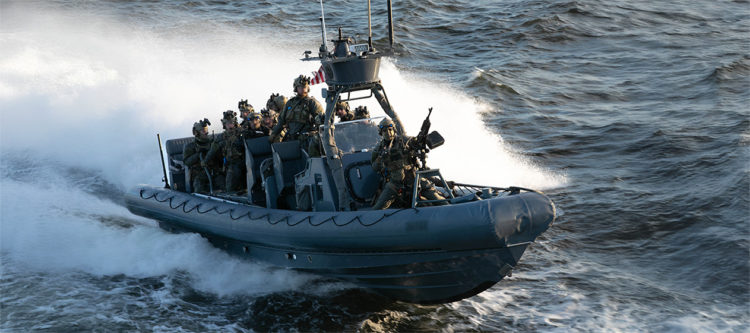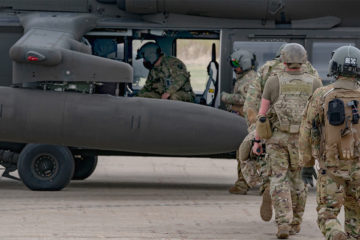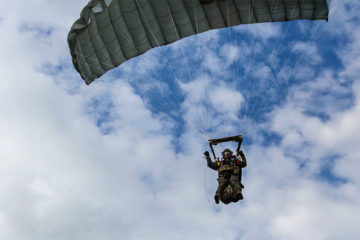4 Key Comms Requirements for Special Operations Forces from SOF Week

Earlier this month, the goTenna team had the opportunity to attend SOF Week 2025, an annual event specifically focused on global special operations forces designed to provide a venue for learning, the sharing of best practices, and the recognition of special forces community members.
For companies like goTenna, SOF Week is an incredible opportunity to connect with our users in the special forces community to learn about the challenges they face, and discuss the new technologies available to help operators accomplish their mission. In fact, goTenna chose SOF Week to announce the release of our new Pro X2m solution, which will enable special forces to connect with unmanned aerial vehicles (UAVs) and other air, ground, and maritime platforms via natively integrated mobile mesh networking capabilities.
America’s special operations forces are often deployed to austere, off-grid locations with little to no traditional connectivity. While the missions being executed require communications, situational awareness, and collaboration among the team, these geographies are often without available, reliable, or trusted networks.
This makes mission critical communication a challenge – Without terrestrial networks like Wi-Fi or cellular, tactical teams not only struggle with communication and coordination, they can also lose access to advanced situational awareness tools and data about the battlefield on which they’re operating.
The U.S. Department of Defense (DoD) has invested heavily in connected sensors and devices designed to provide accurate, timely, and actionable intelligence to military leaders and tactical teams. When connectivity fails, tactical teams in the field lose sight of an accurate, common operating picture.
Without detailed knowledge of the battlespace, special operations forces cannot make data-driven decisions based on real-time intelligence. This could result in teams unnecessarily putting soldiers at risk or impact their capacity to accomplish the mission.
The ability to quickly and efficiently establish fail-safe communications and gain situational awareness is essential for modern SOF operations, and solutions that could enable the rapid deployment of reliable and resilient networks were very well received at SOF Week. However, there were specific capabilities and requirements that we heard consistently by SOF community members that we interacted with at the event.
Four key considerations for SOF communications solutions
Most conversations that we had with SOF community members at this year’s SOF Week invariably involved questions about common themes and similar needs that operators have for their communications devices. These themes and requirements included:
1) Interoperability across platforms
The military has historically struggled with stove-piped, noninteroperable technologies that simply will not work together. This has often been a result of disparate military services and organizations building their own solutions with different standards, or acquiring different solutions that do not “play well together.”
On today’s modern battlefield, SOF teams and operators rely on numerous technologies, weapons systems, and platforms to accomplish the mission. They may utilize unmanned aerial vehicles (UAVs) or other unmanned systems for intelligence gathering, or rely on disparate aerial or maritime platforms to reach a target or destination. It’s essential that each of these platforms, technologies, and systems can communicate together.
This is one of the reasons why the goTenna Pro X2m was so well received at SOF Week 2025. The Pro X2m is designed to seamlessly integrate into military platforms and systems – enabling them to interoperate, communicate and share data using the same mobile mesh networks connecting team members.
2) Cost-effective
There is an ongoing movement across the U.S. federal government and military to cut costs and decrease funding – driving all government agencies and military organizations to do more with less. However, the desire to keep costs low cannot come at the expense of quality or reliability.
Traditional radios and communications systems are incredibly expensive. Thankfully, mobile mesh networking devices are a fraction of the cost – making them easy to acquire and even easier to justify for military leaders and budget holders.
3) Large coverage area
SOF teams often have to operate over large geographic areas. If these regions are mountainous or have other geological features that could impact line-of-sight communications, SOF operators or teams could find themselves unable to access critical communications and situational awareness tools.
The nature of mobile mesh networking – where each radio functions as both a receiver and a transmitter – enables the network to spread out over large areas. Also, by strategically placing a drone overhead equipped with a goTenna Pro X2m functioning as a relay, SOF teams can create a bubble of connectivity that covers miles.
In fact, less than 15 goTenna devices created a network that covered the entire island of Oahu, and goTenna leveraged an Urban Sky weather balloon to create a network that was larger than the state of Maryland.
4) Ease of use
Ultimately, if a new solution or technology is too difficult to use or set up, it won’t be utilized in the field. This is especially true for SOF teams, which often lack dedicated communications personnel or technical experts with the knowledge necessary to deploy and configure complicated communications systems.
Any communications solution leveraged by SOF teams on the battlefield needs to be deployable in a rapid, convenient, and simple fashion. When the device is powered on and connected, it should simply work without any additional need to troubleshoot or reconfigure settings.
This is another area where goTenna mobile mesh networking devices shine. Our technology enables rapid creation of ad hoc, decentralized networks without significant technical knowledge or effort, making goTenna devices ideal for SOF operators. By simply configuring a team’s devices in advance of a mission, connecting the goTenna Pro X2 to a SOF operator’s mobile device and turning it on, a mobile mesh network will be created that is both resilient and assured.
For more information, visit gotenna.com.









No Comment